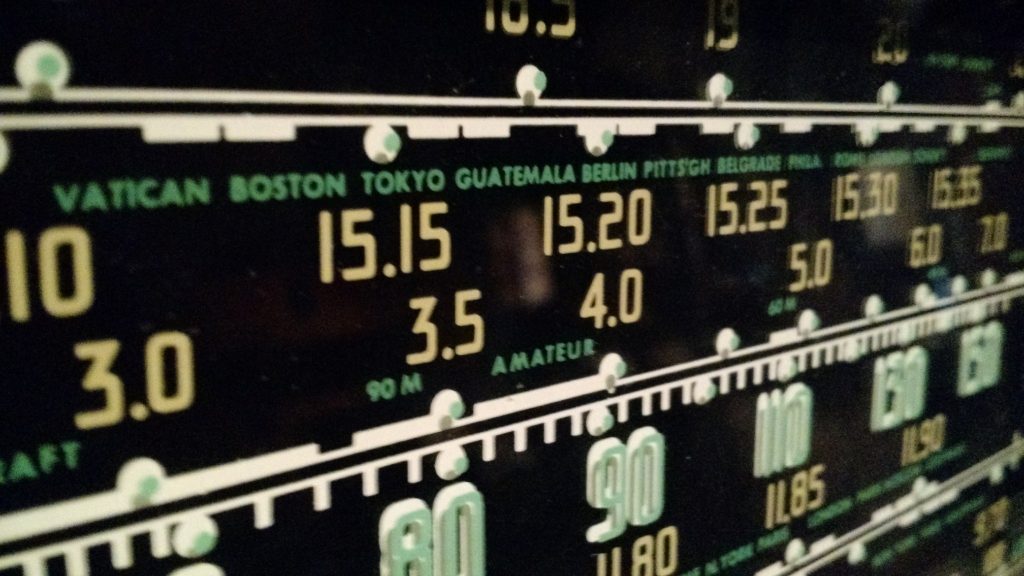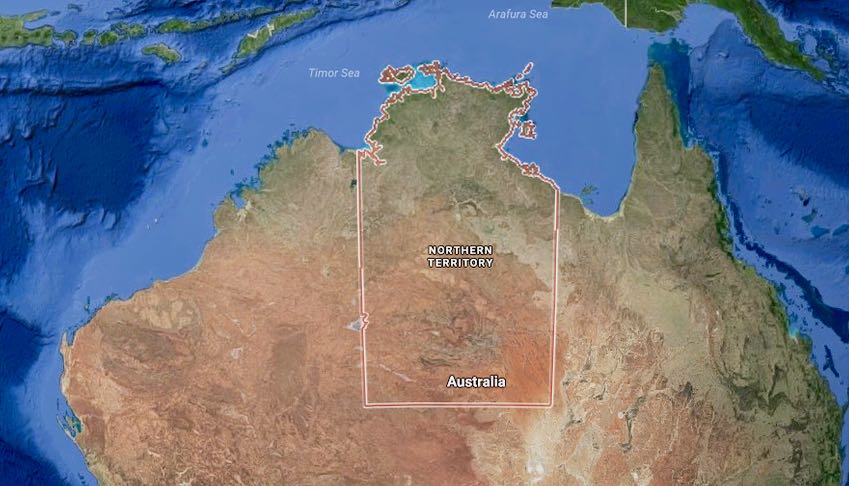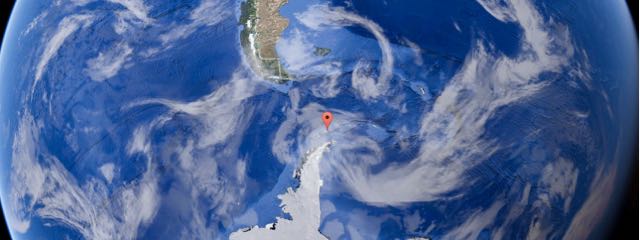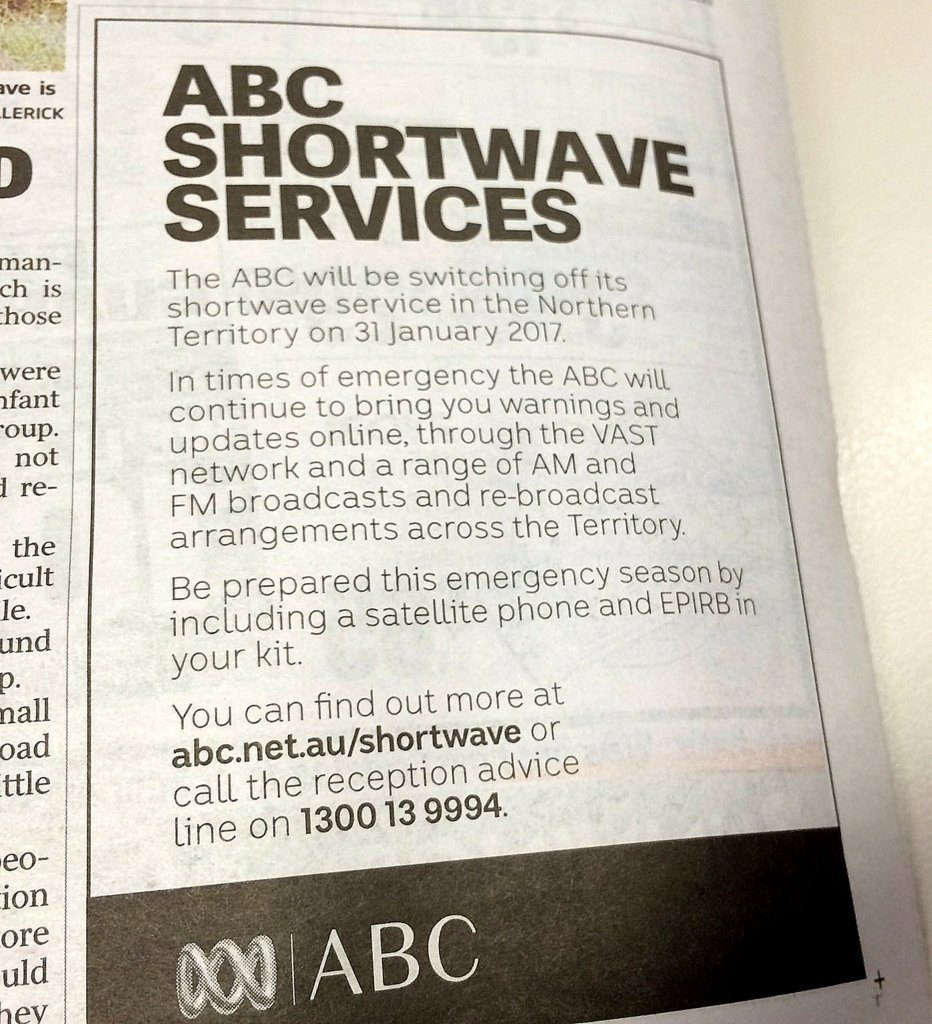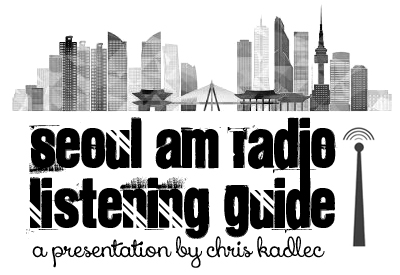Yesterday, we posted a news item regarding the importance of the ABC’s shortwave service to those working and living in the Australian Outback. It appears the ABC has no intention of reversing the decision in any meaningful way. A follow-up piece from The Guardian:
The ABC has remained steadfast in its decision to scrap the shortwave radio service, despite pleadings from federal Labor politicians in a meeting with the managing director, Michelle Guthrie.
Federal senator and cabinet minister Nigel Scullion has joined the calls for ABC to reverse its “city-centric” decision and maintain the service.
[…]“It was certainly a good meeting in terms of being able to thrash out the concerns of the people of the Northern Territory and stakeholders, but in terms of the outcome, it certainly wasn’t a positive outcome,” she said. “The ABC has disappointingly continued to forget about the people of the Northern Territory and those concerns.
“They’re still going ahead with the decision to remove the shortwave at the end of the month due to contractual issues. Michelle Guthrie is keen to come to the Northern Territory but clearly not until after the removal of shortwave.”[…]
Many thanks to SWLing Post contributor, Ross, who has first-hand experience in rural, remote regions of Australia and shares the following:
As someone who spends a fair amount of time in remote areas of far Western Queensland and SE Northern Territory I regularly listen to Radio Australia broadcasts on my Pioneer 2 SW band truck radio.
The only reliable signals in English are Radio Australia, Radio New Zealand and China Drive Beijing. Local MW radio is virtually non existent during daylight hours with severe fading, FM just forget it , line of sight and no local transmitters for 100’s of kilometres.
Once again the city-centric values of Sydney/Canberra are imposed on those of us who live without the manifold benefits the coast and major cities take for granted.
A 100KW AM station broadcasting local ABC throughout Western QLD and southern territory would give us the road conditions, news, weather, flood/storm and fire warnings so necessary in a remote environment where conditions change quickly. [B]ut again HF facilities already exist, $1-2 million is a small cost and not if but when the digital/satellite networks fail HF will be more capable of maintaining communications.
Alternatively, smaller MW repeater stations relaying ABC maybe using microwave relay sites?
As for the comment that many of the complaints came from amateur radio ops , many of us use HF transceivers to keep contact over these large areas whether it be via the VKS-737 outback radio service, Royal Flying doctor radio service or the amateur radio network in an area where mobile telephone service is nonexistent and Satellite phones are not always reliable during severe weather events.My point being that many of us have taken up HF for local and communications in comparison to other more populated parts of the country out of necessity for contact that city based politicians take for granted.
Not many homesteads (stations) in outback Australia without UHF and HF comms equipment and therefore the ability to tune in to the only reliable radio signals from R’Aust.
I have written to the local Federal member Bob Katter in MT ISA who I know is well versed in outback needs and trust he may be able to bang a few heads together in Canberra!
Regards,
Ross AKA Farmlad.
Thank you for sharing your comments, Ross.
Are there other SWLing Post readers who live and/or work in the Outback of Australia? Please comment.

